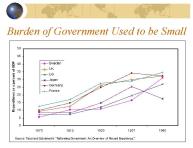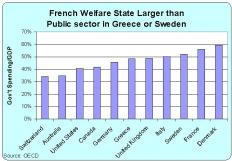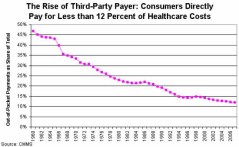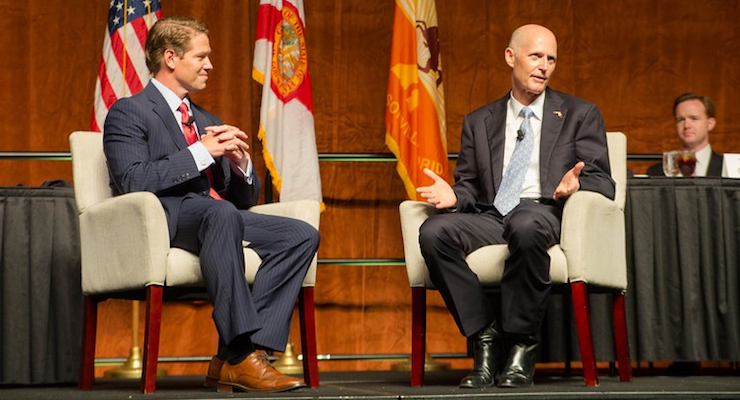Venezuela is Heading for the Fourth Circle of Statist Hell

Venezuelan President Nicolás Maduro took over after leftwing dictator and former President Hugo Chavez died. (Photo: EPA)
Maybe it’s just because I’m a wonk, but it seems that comparing long-run growth rates in various nation sets up a slam-dunk argument for the superiority of free markets and small government.
Whether it’s North Korea vs. South Korea, Cuba vs. Chile, or Ukraine vs. Poland, nations with bigger governments and more intervention inevitably decline compared to market-oriented alternatives.
nations with bigger governments and more intervention inevitably decline compared to market-oriented alternatives.
That’s very compelling evidence, in my humble opinion, but I wonder whether it’s not overly persuasive because it’s too dry and analytical.
Maybe I should focus more on the human cost of statism. And not just by sharing data about low levels of per-capita GDP. Perhaps it would help to explain what that means for the lives of ordinary people.
Venezuela certainly would be a perfect (in a bad way) example.
The Associated Press explains that big government and statism aren’t working very well, particularly for the most vulnerable members of Venezuelan society.
Tens of thousands of Venezuelans poured into neighboring Colombia to buy food and medicine on Saturday after authorities briefly opened the border that has been closed for almost a year. A similar measure last week led to dramatic scenes of the elderly and mothers storming Colombian supermarkets and highlighted how daily life has deteriorated for millions in Venezuela, where the economy has been in a freefall.
That certainly sounds grim, but that story doesn’t fully capture how bad life has become for ordinary people.
Here are some excerpts from a BBC report on the government-created misery in Venezuela.
Travelling through the country this month I saw endless queues of people trying to buy food – any food – at supermarkets and other government-run shops. I was stopped at a roadblock in the middle of the countryside by people who said they had eaten nothing but mangoes for three days. I saw the hopeless expression of a mother, who had been eating so little that she was no longer able to breastfeed her baby.
What a miserable tragedy.
The reporter shares information on his own family and other people he met.
…it was my family who really brought it home to me. My brother told me all his trousers were now too big. My father – never one to grumble – let slip that things were “really tough”. My mother, meanwhile, confessed that sometimes she only eats once a day. They all live in different parts of Venezuela, but none of them is getting enough to eat. It’s a nationwide problem. …a young mother, Liliana, …admitted to going to bed in tears on days when she had been unable to give her two children any dinner. In western Venezuela, in the oil-rich province of Zulia, I visited several small towns where people didn’t know what they would eat the following day.
What a horrifying life.
Imagine if you were a parent in Venezuela and you couldn’t find food for your children? That shouldn’t be happening in the 21st century.
Unsurprisingly, deprivation and economic chaos are now the norm.
A study by three of the country’s main universities indicates…that “extreme poverty” has jumped by 53% since 2014. …The country’s official inflation rate was 180% in December, the last time a figure was made public, but the IMF estimates it will be above 700% by the end of the year.
Considering that Venezuela is in last place for Economic Freedom of the World, none of this should be surprising.
But remember that we want to focus today on the human cost of statism, not just broad measures of economic mismanagement.
And this chart from the BBC on food riots certainly is a persuasive piece of evidence.

Here’s the part that shows the mess was created by bad government policies, with price controls being a major culprit.
…the government years ago fixed the price of many basic goods, such as flour, chicken, or bread. But Venezuelans can only buy the goods at these fixed prices once a week, depending on the final digit of the number on their national identity card. …Because there is a risk of the goods running out, people often arrive at supermarkets in the early hours of the morning, or even earlier. At 6am one morning in Caracas, I met a man who had already been in the queue for three hours. …”I’m hoping to get rice, but sometimes I’ve queued and then been unable to buy anything because the rice runs out before I get in,” he said.
In a sad example of Mitchell’s Law as the failure of one bad policy leads to the imposition of another bad policy.
President Nicolas Maduro[‘s]…latest step has been to create Local Committees of Supplies and Production, better known by the Spanish acronym, CLAP. The CLAPs essentially mean that the government will stop sending imported food to supermarkets and start handing it over to local community councils. …The ultimate aim of the CLAPs is to create self-sustaining communities, where people grow their own food. …a member of a colectivo – a group of hardcore government supporters, often armed, …agreed in the end to show me what the CLAP was aiming to achieve. I was taken to see a barren field – “which we aim to have ready for crops in eight months” – and several chili plants waiting to be planted. It was, to say the least, disheartening.
In other words, Venezuela apparently is creating a sure-to-fail mixture of autarky and collective agriculture.
Even Ayn Rand didn’t think to include something that crazy in her dystopian novel, Atlas Shrugged.
Let’s wrap up with a CNN story about a new “jobs” program from the thugs in Caracas.
In a vaguely-worded decree, Venezuelan officials indicated that public and private sector employees could be forced to work in the country’s fields for at least 60-day periods, which may be extended “if circumstances merit.” …President Nicolas Maduro is using his executive powers to declare a state of economic emergency. …According to the decree from July 22, workers would still be paid their normal salary by the government and they can’t be fired from their actual job. …Venezuela…is grappling with the lack of basic food items like milk, eggs and bread. People wait hours in lines outsides supermarkets to buy groceries and often only see empty shelves. …Venezuela is the world’s worst economy, according to the IMF. It’s expected to shrink 10% this year and inflation is projected to rise over 700%. Beyond food shortages, hospitals are low on supplies, causing many patients to go untreated and some to die.
Wow, I’m not even sure where to start. The fact that people are dying because of horribly sub-standard care? The fact that the government is engaging in a form of quasi-slavery by forcing people to work on farms? Or the fact that bad government policy is the reason for the disaster?
As I contemplated these questions, it got me thinking about the varying degrees of statism and the harmful impact on ordinary people.
So, with apologies to fans of Dante’s Inferno, I put together the Five Circles of Statist Hell. The first layer is relatively benign, featuring nations such as Francethat sap an economy’s vitality with lots of feel-good programs. Then you get countries that belong in the second layer, which is characterized by economies that are actually declining rather than merely stagnating.
And the next layer is where Venezuela is today, with systemic misery and poverty. In other words, the nations in this layer already have declined and have lots of suffering.

But it’s always possible to decline even further. If Venezuela doesn’t reverse some of the awful policies that are causing chaos today, it’s just a matter of time before the country joins North Korea is a state of pervasive deprivation and even starvation.
And the only thing worse than that is the final layer of statist hell, which features countries that actually butcher their own citizens.
By the way, let’s not forget the “useful idiots” who have justified and/or praised Venezuela’s brutal government. I’ve previously cited the misguided words of Joseph Stiglitz.
Well, Joe Kennedy also deserves our scorn and disdain. The former politician actually mourned the death of the evil slug who is most responsible for the mess in Venezuela.
Former congressman Joe Kennedy (D-Mass.) is mourning the death of Venezuelan President Hugo Chavez today, praising Chavez as someone who made a difference for poor people. …Kennedy also said that “some of the wealthiest people on our planet have more money than they can ever reasonably expect to spend.” Kennedy joins Rep. Jose Serrano (D-N.Y.) among the few American politicians to praise Chavez after his death Tuesday.
How disgusting and unseemly. Makes the Che sycophants seems like moral giants.
[mybooktable book=”global-tax-revolution-the-rise-of-tax-competition-and-the-battle-to-defend-it” display=”summary” buybutton_shadowbox=”true”]
The Local Committees of Supplies and Production



















